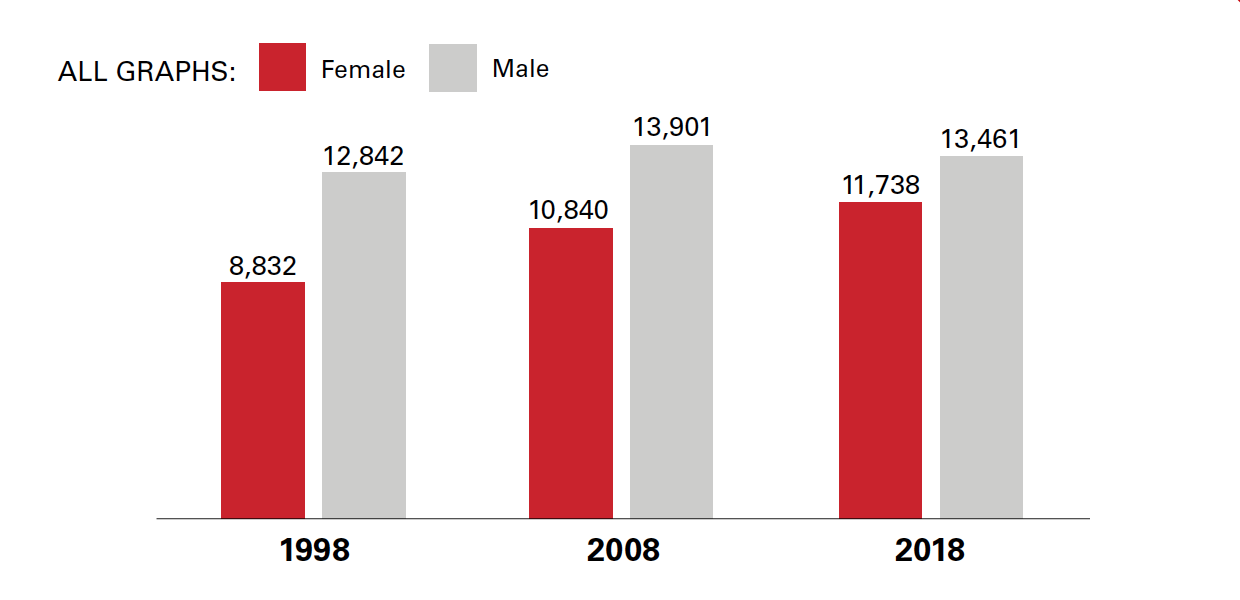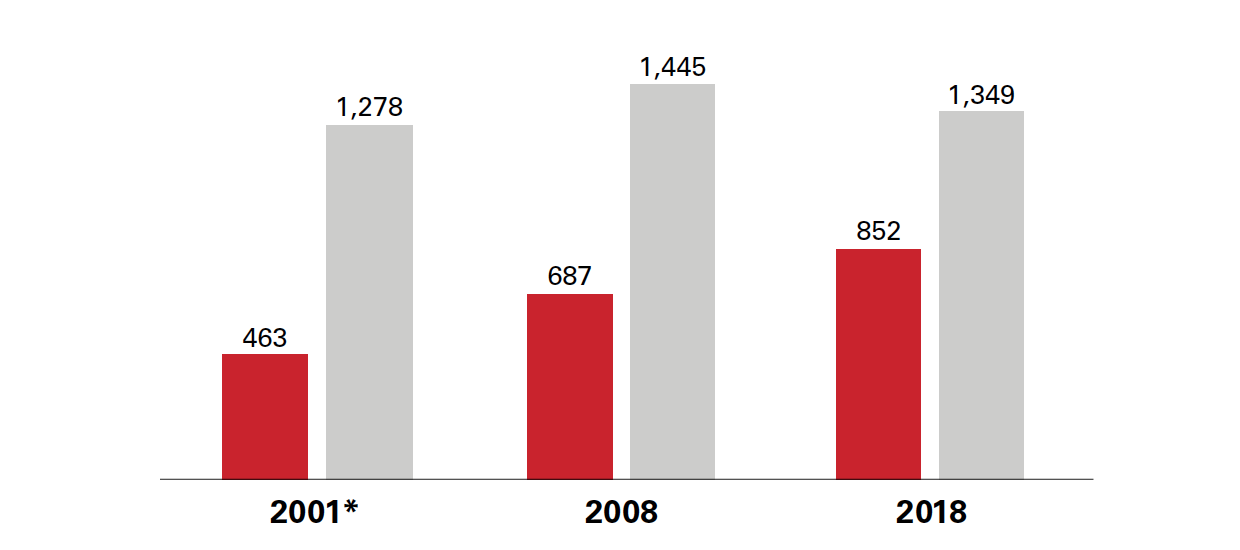
As we celebrate Women’s Herstory Month, we might also think about celebrating something more very soon. NC State is on the verge of a significant milestone that could happen as soon as next fall semester. In recent years, the numbers of women and men in the incoming first-year class have been nearly equal. Next fall could be the first time women outnumber men.
By the Numbers
The following data snapshots over a 20-year span show the changes in female and male representation at NC State.
Undergraduates
From snapshots of 1998, 2008 and 2018, we can see a narrowing of the gap among undergraduates, with women moving from 40.8% to 43.9% to 47% of all undergraduates.

Graduate Students
Graduate students have also showed gains in the numbers of women enrolled over the same timespan, with women moving from 42.2% to 43.5% to 45.25%.

Faculty
There is less of a balance among faculty but those numbers are also moving toward balance, with women faculty comprising 26.6% in 2001 compared to the current 38.7%. These numbers include all ranked and unranked faculty.

In the Colleges
Among the colleges, gender representation varies.
This snapshot from fall semester of 2018 shows the greatest percentage of female students in the School of Veterinary Medicine and the greatest percentage of male students in the College of Engineering, with all other colleges falling somewhere in between. The colleges with the most gender balance during fall 2018 were the College of Agriculture and Life Sciences and the College of Physical and Mathematical Sciences.

Other Important Numbers
The data in these graphs include students who self-identified as female or male. It is important to note that other students may have chosen not to identify as female or male.
Also, it is important to note that the Office for Institutional Equity and Diversity examines other demographics in addition to gender, such as race, ethnicity and national origin.
NC State’s Office for Institutional Research and Planning provided the data used as a basis for this article.
For More Information
- Related story from NC State News: Being There: A Look at Women’s History Through the Lens of Historic Artifacts.